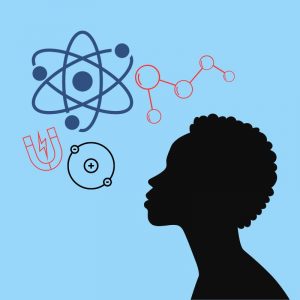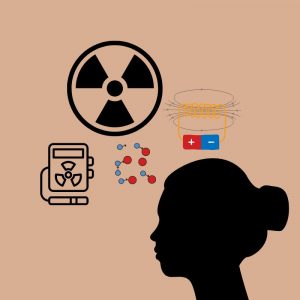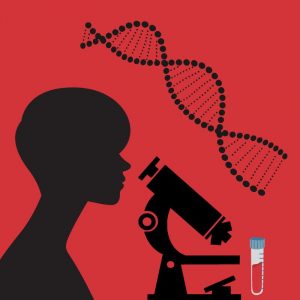Women’s History Month: Women in STEM Magnetism
 Throughout history, women have made significant contributions in fields ranging from economics and civil engineering to yes, you guessed it, science!
Throughout history, women have made significant contributions in fields ranging from economics and civil engineering to yes, you guessed it, science!
For example, Ada Lovelace wrote what’s considered the first computer code. Chemist Katharin Blodgett is credited with creating the world’s first clear glass. And on a hot, sunny day, thank Nancy Johnson for inventing the world’s first ice cream maker!
Since magnets play a major part in many scientific discoveries and innovations – and we’re all about magnets – we’re highlighting a few of the many women in STEM magnetism…just in time for Women’s History Month!
Be sure to share the achievements of the female scientists below with your kids and your class, to motivate, inspire, and get them excited about careers in STEM!
Dr. Shirley Ann Jackson
Every time you use your smart phone or play on your iPad, you can thank Dr. Shirley Ann Jackson!
One of the first two Black American women to obtain a doctorate degree in physics in the United States, Dr. Jackson is a theoretical physicist (someone who uses math to study big ideas like how and where our universe came from).
Her work helped create the materials used in computers, smart phones, and lots of other electronics.
To understand Dr. Jackson’s work, you first need to understand electrons and semiconductors.
If you follow our blog, you know that everything around you is made of molecules. Molecules are made of atoms. Inside atoms, there are protons, neutrons, and electrons. Electrons are the tiny, charged particles inside atoms whose electrical charges line up to create a magnetic field.
Just like its name sounds, a semiconductor is a special material that semi – or somewhat – conducts an electrical current.
In top physics labs in the world, Dr. Jackson explored different ways to control electrons inside semiconductors. Her discoveries made things like touch tone phones, caller ID, and call waiting possible.
Her contributions to science and technology were so important that she was named the head of the Nuclear Regulatory Commission, president of Rensselaer Polytechnic Institute, and served on Obama’s President’s Council of Advisors on Science and Technology.
Chien-Shiung Wu
You or your parents may have seen Oppenheimer, a recent movie about the man who invented the atomic bomb as part of The Manhattan Project. What the movie didn’t tell you is that a Chinese-American scientist named Chien-Shiung Wu also played a major part in The Manhattan Project.
Born in China in 1912, Wu taught herself algebra, geometry, and trigonometry and studied math and physics in college in China before moving to America to earn her Ph.D. in physics at the University of California Berkeley. This is where she eventually presented her final project, or thesis, on bremsstrahlung, a German term for the electromagnetic radiation produced by a sudden slowing of charged particles.
Her work was so impressive that she was asked to join The Manhattan Project, where she solved a major problem involving nuclear reactors and built an instrument called a Geiger counter, used to detect nuclear radiation levels. Her contributions to the study of beta decay is still referenced by nuclear physicists today.
Wu’s intelligence and dedication to her field earned her positions that were not available to most women at the time, and she is still thought to be the only Chinese person to have worked on The Manhattan Project.
Her groundbreaking and barrier breaking work earned her many awards, including the Wolf Prize in Physics, the Comstock Prize in Physics, and the National Medal of Science for Physical Science.
Rosalind Franklin
Did you know that a baby with two parents with green eyes will always have green eyes? These predictions – and other, more important genetic information – can be predicted thanks to Rosalind Franklin, the British chemist who discovered the molecular structure of deoxyribonucleic acid, otherwise known as DNA.
Franklin used a process called X-ray diffraction to reveal this structure of complex molecules. This process uses a crystal to diffract the X-ray wavelengths and reveal the geometry or shape of a molecule.
In addition to uncovering the structure of DNA, Franklin’s process contributed to our understanding of the structure of other complex molecules, including the molecules that make up magnetic materials as well as the first ever detailed molecular structure of a virus.
There’s also a bit of drama surrounding Franklin’s DNA discovery. Some people think James Watson and Francis Crick, the men credited for discovering the twisted structure of DNA (double helix), only made the discovery after being shown Franklin’s X-ray image – without her permission. As the old joke goes, “What did Watson and Crick discover in 1953? Franklin’s data!”
This Women’s History Month, we honor these women, and so many others, who have worked tirelessly to break the gender barriers that existed in science in their day and make these meaningful contributions.
Thanks to their work, girls and women today are free to work in any field they like – and to receive credit for their discoveries.
Tags: Girls in STEM , Magnet Scientists , STEM , Women in STEM , Women in STEM Movement , Women's History Month
Share This:
